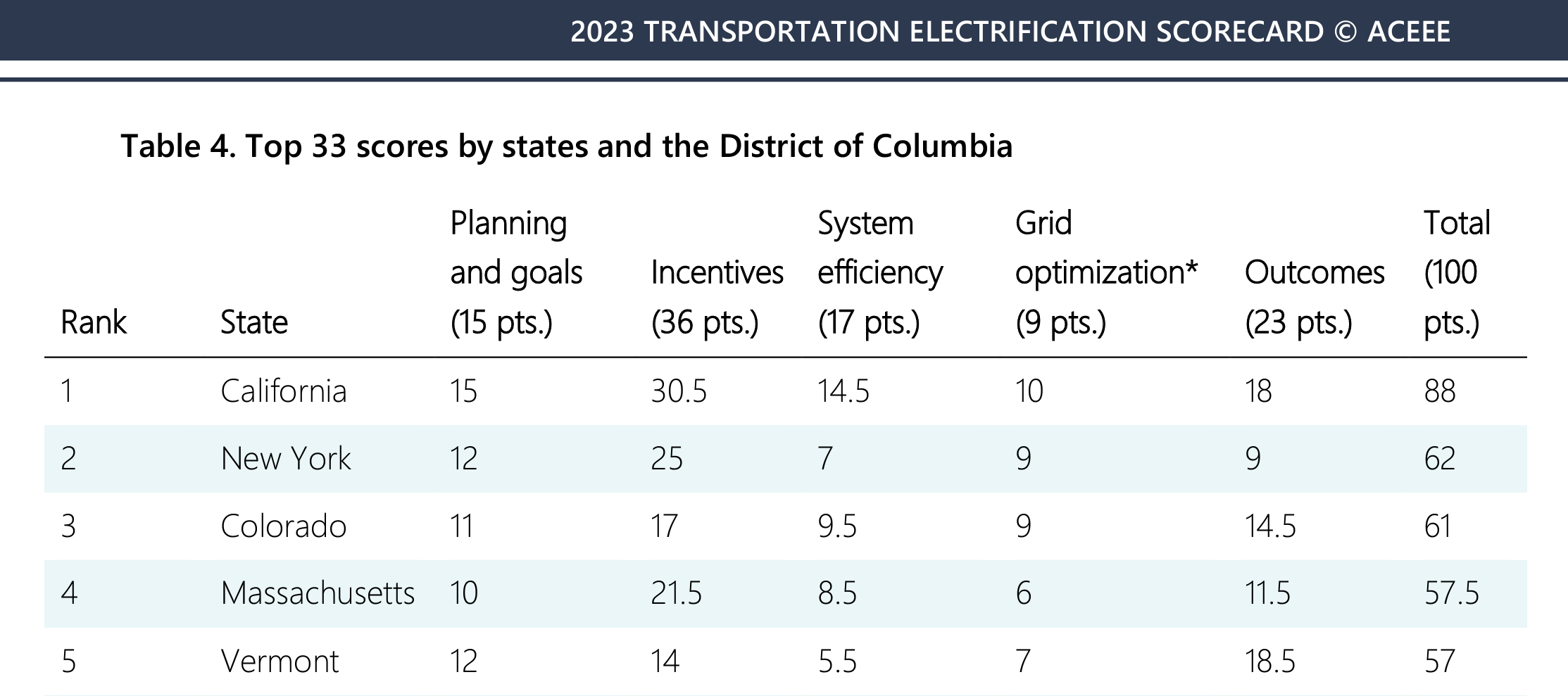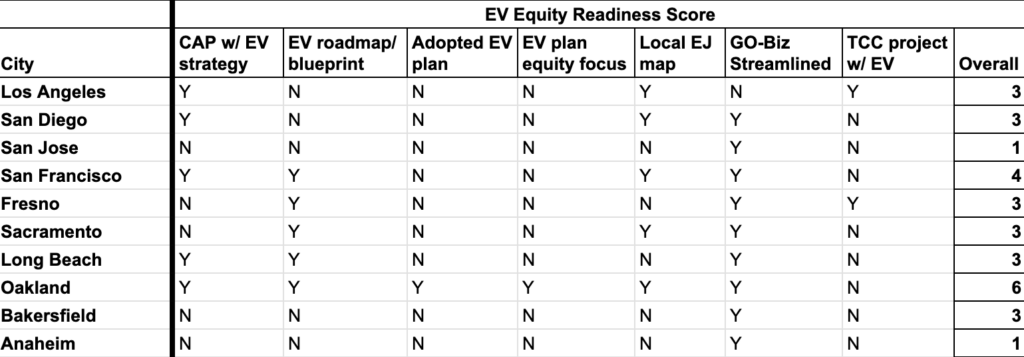Are California Cities Ready for an Equitable EV Transition?
How well are cities planning for the transition, and how can we track readiness?
A recent report from ACEEE reinforces California’s leadership in vehicle electrification–at the state level, California’s EV policies, incentives, and supporting strategies outpace the closest competitors by a significant margin (and most pro-electrification states’ programs owe their design and federal authorization to California):

Source: ACEEE, 2023 Transportation Electrification Scorecard.
But with California policymakers calling for a transition to all zero-emission vehicle sales by 2035, and with federal programs offering substantial financial incentives for electric vehicle purchases and charger installations, it is incumbent upon local governments to develop comprehensive, community-appropriate strategies to ensure that Californians of all income levels and in all parts of the state have access to the vehicles and charging infrastructure they need.
How cities go about this will depend heavily on local context–while some may venture into direct ownership and management of charging in public lots and on residential streets, others may leave the rollout entirely to private investment by residents and employers. Whatever approach a city takes, it should be a deliberate policy choice based on community needs, land use, travel dynamics, grid capacity, and other criteria specific to a given location.
Most cities will likely adopt a multifaceted approach with public, private, and hybrid elements. In any case, a robust plan detailing the elements of that approach and who will accomplish each one is a vital step. An equity-focused EV action plan is crucial to crafting locally appropriate solutions to key challenges–like how to provide charging to residents of large multifamily dwellings, how to meet accessibility requirements for chargers in public locations, and how to ensure public chargers are safe, durable, and reliable.
Californians have bought over 1.5 million EVs since 2010, including over 20 percent of new light-duty purchases so far this year. How ready are California cities to ensure equitable charging access?
Answering this question is challenging, particularly given the still-nascent state of local EV action planning. But, given the information we do have about cities’ climate and EV planning efforts, we can start to assess readiness by tracking a few relevant data points such as:
- Has the city adopted a climate action plan (CAP) that includes detailed, EV-specific strategies?
- Has the city developed an EV readiness blueprint or roadmap?
- Has the city adopted an EV action plan? Does the EV action plan include clear equity-focused strategies?
- Does the city have a streamlined charging permitting ordinance?
- Does the city have a locally tailored environmental justice mapping framework?
- Does the city have a Transformative Climate Communities project (a state-funded program focused on equitable and resilient local investments) with EV-related components?
What do these initial criteria tell us? Of California’s ten most populous cities, only one (Oakland) has taken a clear majority of the steps. Most are somewhere in the middle, but very few are hitting the most important notes–adopting CAPs with specified EV actions, adopting EV action plans with specified equity strategies, developing maps for understanding environmental justice in the local context.

Note: This draft readiness evaluation is a preliminary assessment. More criteria and rules for assessment are in development.
Of course, these criteria are merely proxies for proactive planning and equitable implementation, and many involve judgment calls (for example, whether a county-level EV roadmap is adequate for a city at this stage; or whether the EV strategies in a city’s CAP are detailed and actionable). Readiness is far more than taking steps like producing an equity-focused action plan–more indicators will emerge over time.
And simply meeting all of these preliminary targets will not necessarily translate into real and equitable infrastructure placement, nor does failing to meet them necessarily mean a city lacks infrastructure. Truly ensuring equitable mobility for all communities will require years of active planning by city staff, stakeholder engagement, winning and implementing grant funds, and cultivating appropriate private investment–all while aligning EV charging infrastructure with long-term expansions of public transit and walkable land uses that provide truly healthy, vibrant urban landscapes for all.
As more cities develop pilot programs, craft action plans, and deliver federal funds into communities, assessing readiness will become a robust and quantifiable exercise, and investments made will supplant readiness as the relevant metric. But, at this point, it’s clear that California cities need to do more to plan and carry out an equitable transition.
You can learn more about CLEE’s initiative here and follow our equitable mobility financing work with ProspectSV here.






Reader Comments